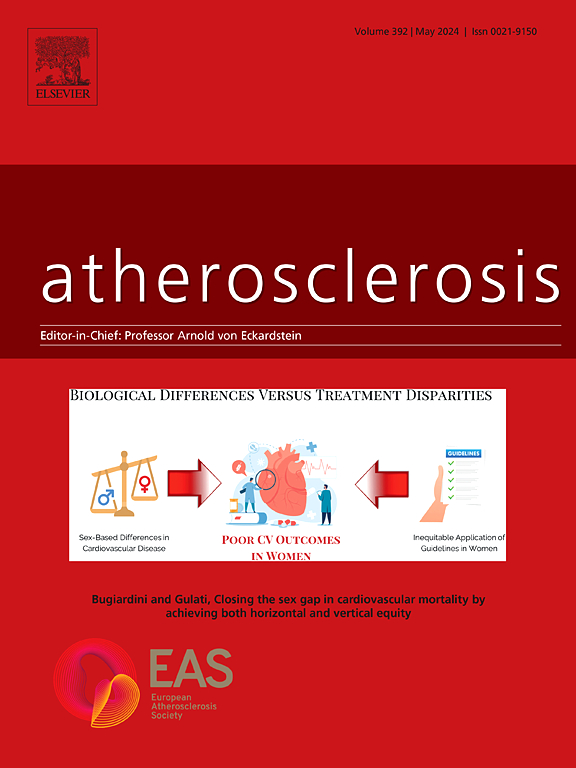土壤和水污染与心血管疾病之间的联系。
IF 5.7
2区 医学
Q1 CARDIAC & CARDIOVASCULAR SYSTEMS
引用次数: 0
摘要
土壤和水污染对全球健康、生态系统和生物多样性构成重大威胁。健康的土壤是陆地生态系统的基础,支持粮食生产、生物多样性、保水和碳封存。然而,土壤退化危及32亿人的健康,而超过20亿人生活在缺水地区。土壤、空气和水的污染是导致疾病的主要环境原因,每年造成900多万人过早死亡。土壤污染源于重金属、合成化学品、农药和塑料,由工业活动、农业和废物管理不善造成。这些污染物会诱发氧化应激、炎症和激素紊乱,显著增加心血管疾病等非传染性疾病的风险。微塑料和纳米塑料等新出现的污染物通过细胞损伤、氧化应激和心血管功能障碍放大了健康风险。城市化和气候变化通过砍伐森林、过度施肥和污染加剧了土壤退化,进一步威胁到生态系统的可持续性和人类健康。减少化学品接触、采用可持续土地使用做法和推进城市规划等缓解努力在降低与污染有关的健康影响方面显示出希望。公共卫生举措、更严格的污染控制和生活方式干预,包括富含抗氧化剂的饮食,也可以减轻风险。正如高收入国家实施高成本效益解决方案所证明的那样,污染仍然是可以预防的。欧盟委员会的零污染愿景等政策旨在到2050年将污染减少到安全水平,促进可持续的生态系统和公共健康。解决土壤污染问题对于减轻非传染性疾病,特别是心血管疾病的全球负担,并为子孙后代营造更健康的环境至关重要。本文章由计算机程序翻译,如有差异,请以英文原文为准。

The links between soil and water pollution and cardiovascular disease
Soil and water pollution represent significant threats to global health, ecosystems, and biodiversity. Healthy soils underpin terrestrial ecosystems, supporting food production, biodiversity, water retention, and carbon sequestration. However, soil degradation jeopardizes the health of 3.2 billion people, while over 2 billion live in water-stressed regions. Pollution of soil, air, and water is a leading environmental cause of disease, contributing to over 9 million premature deaths annually. Soil contamination stems from heavy metals, synthetic chemicals, pesticides, and plastics, driven by industrial activity, agriculture, and waste mismanagement. These pollutants induce oxidative stress, inflammation, and hormonal disruption, significantly increasing risks for non-communicable diseases (NCDs) such as cardiovascular disease (CVD).
Emerging contaminants like micro- and nanoplastics amplify health risks through cellular damage, oxidative stress, and cardiovascular dysfunction. Urbanization and climate change exacerbate soil degradation through deforestation, overfertilization, and pollution, further threatening ecosystem sustainability and human health. Mitigation efforts, such as reducing chemical exposure, adopting sustainable land-use practices, and advancing urban planning, have shown promise in lowering pollution-related health impacts. Public health initiatives, stricter pollution controls, and lifestyle interventions, including antioxidant-rich diets, can also mitigate risks.
Pollution remains preventable, as demonstrated by high-income nations implementing cost-effective solutions. Policies like the European Commission's Zero-Pollution Vision aim to reduce pollution to safe levels by 2050, promoting sustainable ecosystems and public health. Addressing soil pollution is critical to combating the global burden of NCDs, particularly CVDs, and fostering a healthier environment for future generations.
求助全文
通过发布文献求助,成功后即可免费获取论文全文。
去求助
来源期刊

Atherosclerosis
医学-外周血管病
CiteScore
9.80
自引率
3.80%
发文量
1269
审稿时长
36 days
期刊介绍:
Atherosclerosis has an open access mirror journal Atherosclerosis: X, sharing the same aims and scope, editorial team, submission system and rigorous peer review.
Atherosclerosis brings together, from all sources, papers concerned with investigation on atherosclerosis, its risk factors and clinical manifestations. Atherosclerosis covers basic and translational, clinical and population research approaches to arterial and vascular biology and disease, as well as their risk factors including: disturbances of lipid and lipoprotein metabolism, diabetes and hypertension, thrombosis, and inflammation. The Editors are interested in original or review papers dealing with the pathogenesis, environmental, genetic and epigenetic basis, diagnosis or treatment of atherosclerosis and related diseases as well as their risk factors.
 求助内容:
求助内容: 应助结果提醒方式:
应助结果提醒方式:


